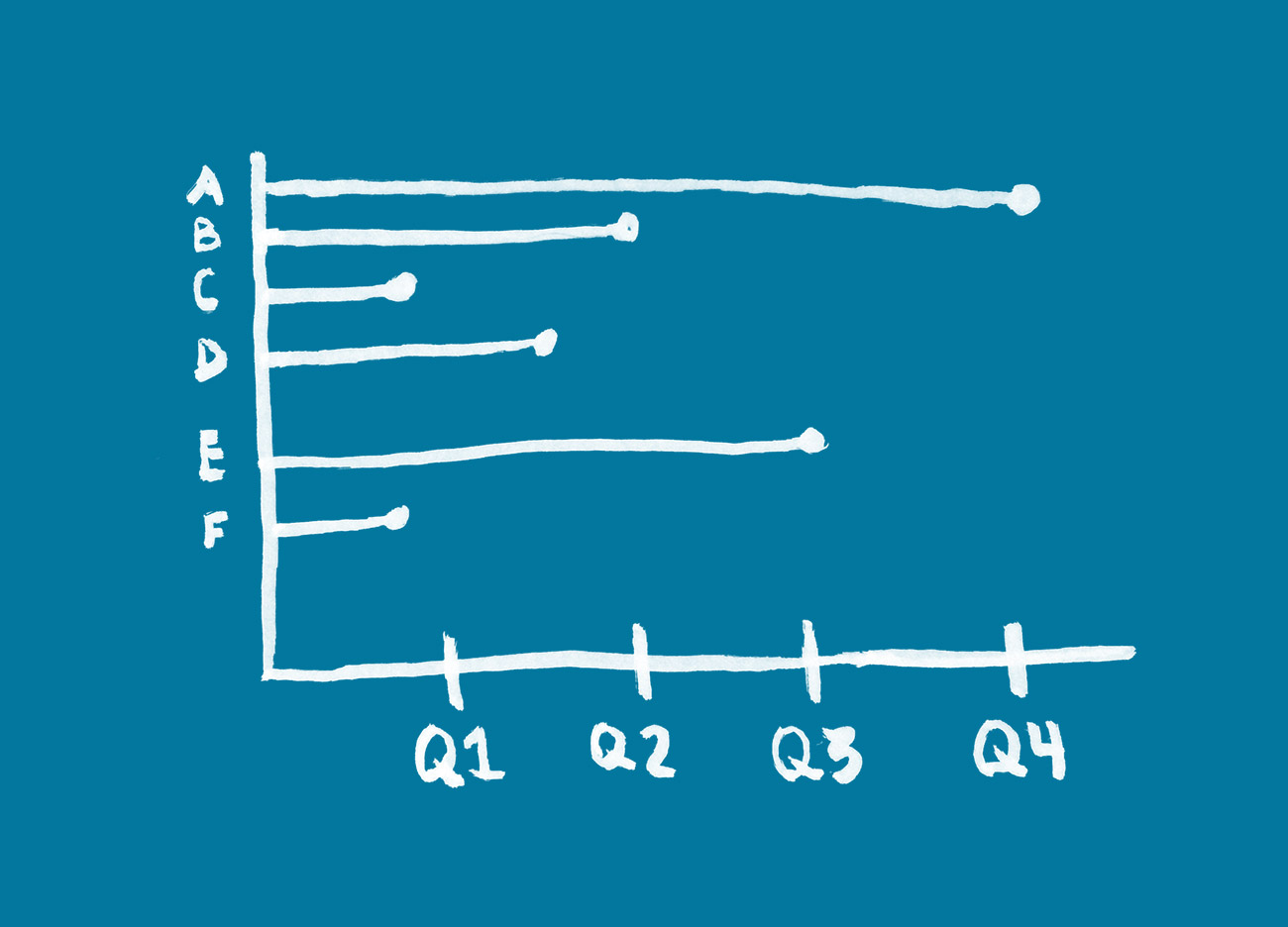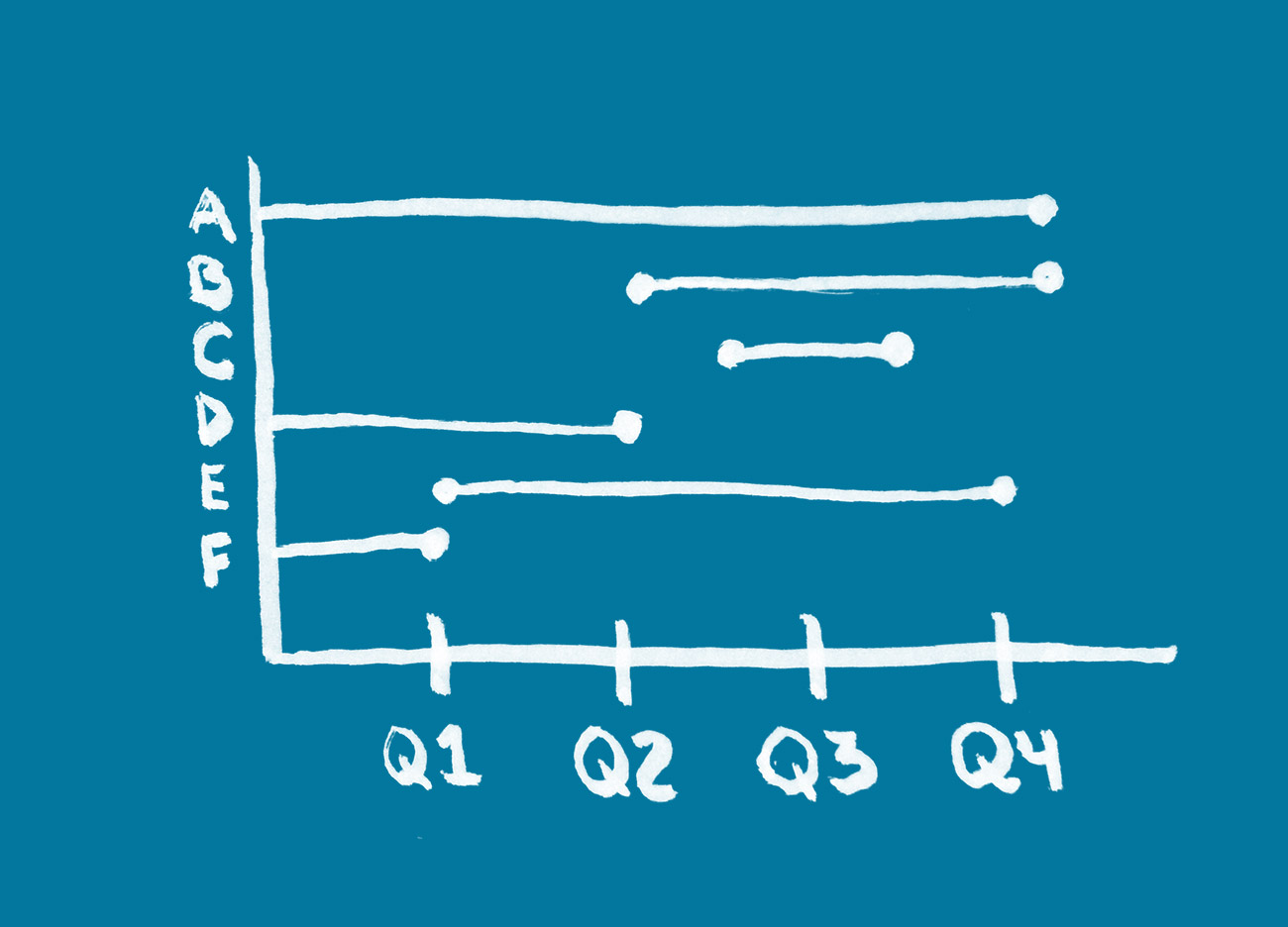Product Patience
Recently, my team at Etsy and I have been doing some roadmap planning for next year. First, we made a huge list of ideas and pain points we could address, then bucketed them, then gave them some prioritization. We honed and crafted our plan until we had a short, achievable list of what we think are impactful to-dos for our team in 2014.
Then we started to put our product ideas onto a Gantt chart (on an actual chalkboard, no less). We estimated how long things would take, how many people we'd need to complete stuff, who those people could potentially be, etc. We got to the end of that process and wound up with a chart that looked something like this:
Whenever we'd talk about a project, someone would say "Oh, that's a simple one, we can knock that out in a couple of weeks!" or "We should start that right away so that we can show progress quickly." We were so excited by all the ideas we had that we wound up scheduling all of our work to start January 1st.
Whoops.
Not only do we not have enough people on our team to do all of that work simultaneously, but some of our projects are informed by each other. To know how we're going to tackle Project C, we need to be at least halfway through Project A. And Project B literally can't be started until Project D is totally complete.
There's that piece of advice that you should start out by saying "no" to new project ideas so that you stay focused on what really matters. Just as important is the ability to say "not now" to ideas you're going to execute. To be patient with your product and realize that the when is just as important as the what. Sequencing your features and releases in an intelligent way will give people using your product the feeling of "Ah, of course this is what they're releasing," and maybe even hint at the future. You also get the side-benefit of not burning out your product team by trying to do too much at once.
In our case, we stepped back and thought about the order our projects needed to be started and completed. After another hour or so of shuffling and reshuffling our chart around, we wound up with something like this:
Much better.

